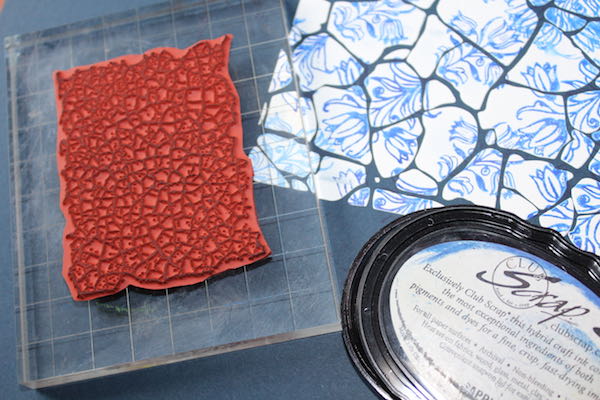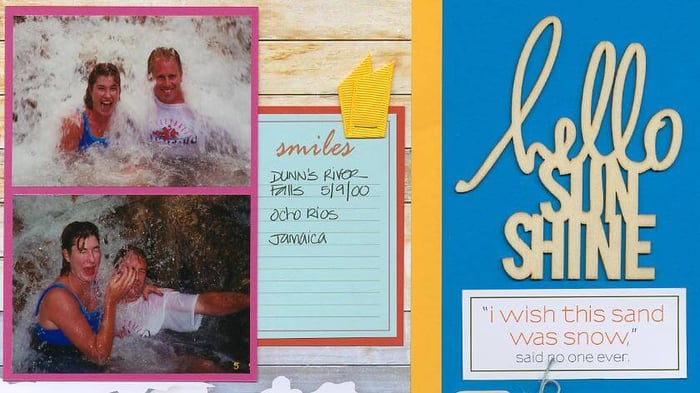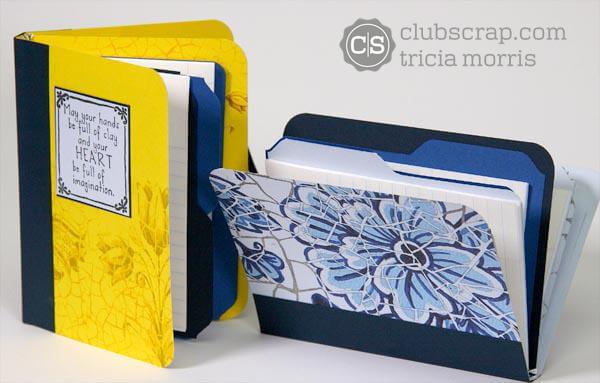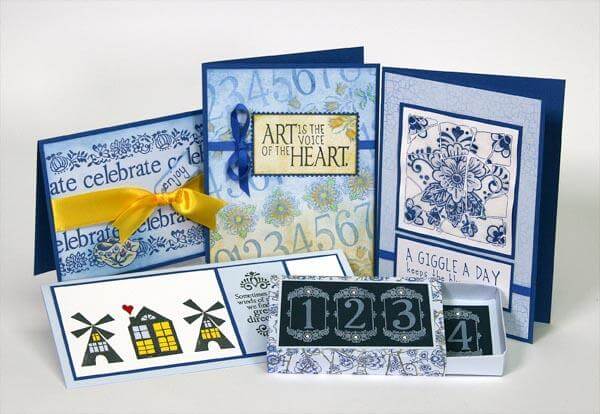Create beautiful faux tiles with the Delft Cracked Porcelain stencil combined with clever stamping and texture paste.

Lay the stencil over a sheet of Delft Dk. Blue paper and secure with tape.

Spread a layer of handmade texture paste evenly over the openings of the stencil with a palette knife. (The paste is made with talcum powder, CS® Bookbinding Glue, white paint and water.)

Carefully remove the stencil and allow the paste to dry completely.

Stamp the small and large tulip images from the Jumbo and Art Nouveau UM sheets onto the dried paste.

Cover the entire piece with the crackle texture stamp image with Sapphire ink.


Trim the panel and book board into four 3.5x3.5" squares.

Round the corners with a Corner Chomper on the 1/2" setting.

Laminate each book board square with the art panel with bookbinding glue.

Rub Versamark ink over the surface of each coaster. Make sure to get the ink into all the nooks and crannies.

Sprinkle a generous amount of Ultra Thick Clear Embossing Powder onto the coaster and gently remove any excess powder.


Melt in a 340° F oven for 2-3 minutes. **DO NOT use a baking sheet that is used for cooking food. Remove from the oven and allow to cool completely. Why the oven? Using a heat tool for this process can cause powder to blow off the project. It is also necessary to apply a large amount of powder because a second application and heat cycle can cause discoloration.


Create a decorative box to hold your coasters.


It's your turn to get cracking and make some coasters!
 Julie
Julie




